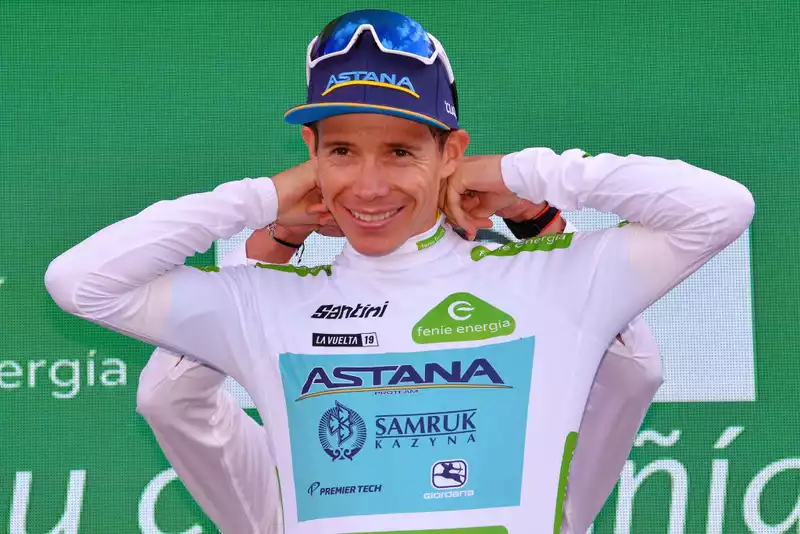Being caught and passed in a time trial is like a knockout blow for a Grand Tour contender Raymond Poulidor was caught by Jacques Ancueil in the 1962 Tour de France time trial in Lyon, and Antonin Magne The director opened the window and warned him: "Raymond, watch the Caravelle (a French jet) go by and admire it."
Unlike Poulidor, Miguel Angel Lopez (Astana) had not given up admiring the aerodynamics of Tuesday's Vuelta a España stage 10, when Primoz Roglic (Jumbo Visma) swooped on him in the last kilometer of the pow.
The day before, Lopez had predicted a 90-second to 2-minute gap to Roglic, and he was right. Starting two minutes behind Lopez, Roglic caught Lopez in the closing meters of the stage and the two crossed the finish line almost simultaneously.
Instead of viewing being caught by Roglic as a humiliation, Lopez tried to put his performance in a broader context. He finished 22 seconds ahead of Alejandro Valverde (Movistar) and better than fellow countryman Nairo Quintana (Movistar).
"Of course, two minutes is still two minutes, so I would have liked to have run less time," Lopez said after the race. 'Of course, two minutes is two minutes, and I wanted to get less. But all in all, I think it was a good day on the bike. The time trial is over and we have two weeks of hard mountain stages ahead of us.
Lopez's thoughts were echoed by Astana teammate Dario Cataldo in Saint-Palle before the start of stage 11 on Wednesday. The Vuelta's narrow margin was considerably slackened, but the 36.2-km ordeal around the Pau was also the final time trial of the entire race. From here to Madrid, the Mayo Rojo will be contested primarily in the friendly high mountains.
"Two minutes is always a big time difference," Cataldo told Cycling News. For Miguel Angel, he knew that this would be the most difficult moment of the Vuelta, but he also knew that the terrain would be more favorable from here on.
"There is still half of the Vuelta left and a lot of mountains. It's certainly not easy, but before the Vuelta started, we could have imagined being in this position at this point."
Lopez is in third place overall, 2:11 behind Roglic and 19 seconds behind Valverde, while Quintana is in fourth, just three minutes behind Mayo Rojo. If Roglic's current position in the Vuelta is roughly equivalent to his status in the corresponding points of the Giro d'Italia, Lopez's challenge is considerably healthier than at the same time in May.
After a disaster in the time trial in San Marino on stage 9 of the Giro, Lopez was 4:29 behind Roglic. Another individual time trial was held in Verona on the final day, and Lopez was forced to attack early on in the remaining stages of the Giro, but ultimately settled for seventh overall in Verona. In this Vuelta, he could, at least in theory, use a more conservative approach to catch up this time around.
"A two-minute gap is more manageable than the gap in the Giro, and we can try to chip away at it by attacking on the final climb rather than risking it from afar," said Cataldo. We still have a summit finish ahead of us. We know the situation and we know our strengths.
Lopez has already worn the maillot rojo three times in this Vuelta. Meanwhile, in Andorra on stage 9, Lopez attacked on the Alto de la Comella and, with the help of his Astana teammates, opened a 0.5-minute gap on Roglic and others. Lopez's efforts were undone when he crashed on the gravel road before the final climb, but he proved the quality of his support group, led by Jacob Fuglsang and Gorka Izaguirre.
"The crash was unfortunate, but he rode great and we did a good job. If we can do something like that there, we know we can do it again further on in the race," said Cataldo, who acknowledged that Roglic can rely on Jumbo-Visma's formidable security team.
"They are really strong and have already proven that in the mountains. But we are a strong team too, so it will be a good battle."
.

Comments